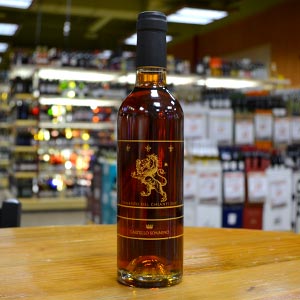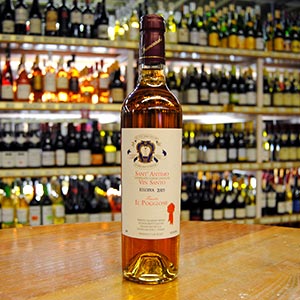
Wine Department: Liquid Ambrosia: The Many Tales of Vin Santo, How It’s Made and How It Came To Be
Back to feed- Posted: 2/5/2017
- Categories: Wine
The name has numerous stories affiliated with its origins, yet the most prevailing stories are of a 14th century cleric who used leftover sacramental wine to heal the sick, as well as the fermentation process for these wines beginning All Saint’s Day and bottling around Easter.
The grapes are picked between September and October, and set to dry out, or dessicate, which allows the sugars to become denser. Crush and fermentation can start as early as a few weeks after harvest, or can began as late as March. Starter yeasts can be introduced to begin fermentation quicker – known as a madre – that can be remnants of the previous vintage, and can aid in developing more complexity in the wine.
Aging takes place in small oak barrels, with many producers aging the wine for anywhere from 5 to 10 years (the minimum requirement is 3 years). These wines develop much in the way that a tawny Port would, demonstrating notes of toffee, maple and caramel. Some producers have even begun using non-oak barrels, such as chestnut, juniper and mahogany, increasing the intricate nuances of the wine, a similar approach to making vinegar in the region of Emilia-Romagna in Italy. In some instances, when the wines have become too oxidized, the wine is converted to vinegar (to salvage the product).
While Vin Santo is produced all around Italy, its primary regions are found in Tuscany, where there are 11 of the DOC appellations in this region:
- Bianco dell’Empolese DOC – Near the town of Empola. At least 80% Trebbiano and the rest local varieties. Must be aged at least 3 years.
- Bianco Pisano di San Torpe DOC – Near the valleys of Pisa. At least 75% Trebbiano and the remainder local red and white grapes. Must be aged at least 4 years.
- Bianco della Valdinievole DOC – Near the villages of Montecatini and Pescia. At least 70% Trebbiano. Malvasia, Canaiolo Bianca and Vermentino can make up 25% with local varieties the remaining 5%.
- Cortona DOC – Near the village of Cortona at the border with Umbria. 85% Sangiovese with the rest local varieties. Must be at least 8 years in barrique.
- Montereggio di Massa Marittima DOC – One of the more recognized DOCs internationally – 80% Trebbiano and Malvasia Bianca, with the remaining 20% local varieties. At least 3 years – 4 years for wines labeled Riserva.
- Montescudaio DOC – From the area near the city of Volterra. 70% Trebbiano, 15-30% Malvasia Bianca, with whatever remainder being of local varieties.
- Pomino DOC – From the commune of Rufina. Both red and white styles are produced here. Whites are comprised of predominantly Chardonnay and Pinot Bianco with up to 30% Trebbiano and the remainder of local white varieties. The reds are mainly Sangiovese, Canaiolo, Cabernet Sauvignon, Cabernet Franc and Merlot with the remaining percentage local varieties. Minimum 3 years of aging.
- San Gimignano DOC – Overlaps the same area as Vernaccia di San Gimignano. Malvasia, Trebbiano and Vernaccia. Minimum 3 years.
- Sant’Antimo DOC – Overlaps the same area as Brunello di Montalcino DOCG. Trebbiano and Malvasia. 3 years, 4 years if labeled Riserva.
- Val d’Arbia DOC – Some of the Chianti zone in and around Siena. Trebbiano and Malvasia with local varieties rounding out the blend.
- Vin Santo di Montepulciano DOC – Also overlaps much of the Brunello di Montalcino DOCG. 70% Grechetto, Trebbiano and Malvasia with the rest local varieties. 3 years aging, 4 if labeled Riserva.
by Kevin Keith
Vin Santo can be hard to find, but we like to keep a few of our favorites on hand:






